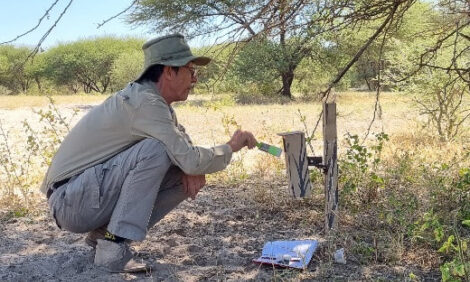



Why Do Cow Teats Widen With Age?
UK – Ill-fitting teat liners are causing udders to widen as cows mature, says a milking technology specialist.Liner diameter has a history of being too wide on European and UK farms, Ian Ohnstad, head of The Dairy Group and the British Mastitis Council told the Large Herd Seminar in Gloucestershire today.
His message was that the industry should be challenged to be more objective about the liners selected for milking and more accurate about teat measurements.
This would help alleviate Hypokeratosis, a sign of udder stress and teat congestion, he added.
Narrow bore liners were prescribed as being more suitable as they allow the teat to expand downwards to the end of the liner ‘where it all happens’.
Such liners are favoured in US dairies and should be in the UK too, he urged.
UK teats are wider than the US average because 'the teat adapts to fit the liners we milk with', said Mr Ohnstad.

Discussing the huge variety in teat size and shape within and across herds, Mr Ohnstad said: “Liners selected must accommodate short, long, fat and thin teats – this is a difficult task.”
“You take any herd anywhere in the world, there will be hugely different teats. I visited a Fleckvieh dairy farm where finding an appropriate liner would be a challenge.”
Durability and Pressure
Citing studies on liner durability and hygiene, Mr Ohnstad warned farmers that liners may not be optimal for the expected 2,500 milkings.
Liner bacteria increases significantly after 1,500 milkings, he explained.
“Sanitising processes being applied become insufficient to cope with cleaning the increasing roughness of the liner’s surface,” he added.
‘Over pressure’ within the liner while milking causes significant teat damage and, likening Hypokeratosis to callouses on a human hand, Mr Ohnstad said the teat reacts by producing extra cell deposits in response.
He warned that, when coupled with long milking times, this creates opportunity for problems.
“Most machines pulsate at around 60 times per minute, so if you leave a cluster on another two minutes, this means 120 openings and closings of the teat canal,” said Mr Ohnstad.
“This directly links to teat congestion and Hypokeratosis”
A Compromise
When looking to prevent teat congestion, Mr Ohnstad pointed producers towards liner performance maps to inform the ‘trade-off’ decision between vacuum power and pulsation time.
Mr Ohnstad said: “In the parlour it is a case of balancing between milking speed and effect on teat congestion.
“Sacrificing 12 per cent of milking speed can be worthwhile against increasing the system vacuum and moving towards a higher risk of teat congestion.”
Michael Priestley
News Team - Editor
Mainly production and market stories on ruminants sector. Works closely with sustainability consultants at FAI Farms



